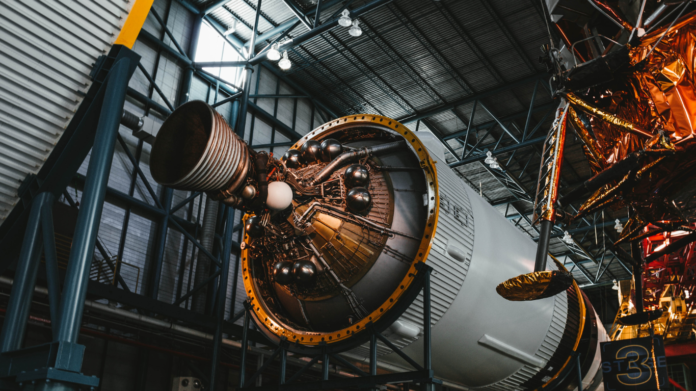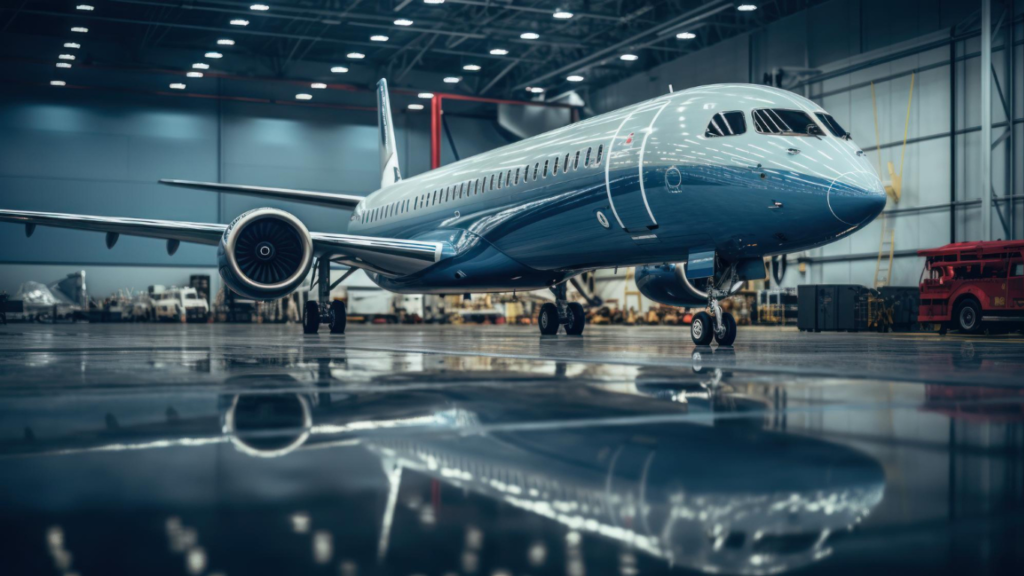
Artificial intelligence is becoming more and more prevalent in a variety of industries, including banking, retail, and healthcare. Consequently, this revolution is not unique to the aerospace sector. Artificial intelligence and its computational capabilities for data interpretation can simplify and expedite a wide range of tasks, including system administration, customer support, analytical procedures, and more. AI has swiftly brought in a new era of productivity and efficiency by revolutionising several parts of the manufacturing process. AI algorithms can identify discrepancies, forecast failures, and initiate repair procedures before problems arise by evaluating enormous volumes of sensor data from aircraft systems and components.
The development, production, maintenance, and support of aeroplanes, spacecraft, and rotorcraft are all encompassed within the aerospace sector. It is a highly important industry, and the success of its components depends on their extreme accuracy and dependability. As a result, the sector must continuously enhance its production procedures, lower labour expenses and error rates, keep an eye on the condition of aircraft electronics, and successfully handle safety-related concerns. All these constraints can be resolved with artificial intelligence, the catch being the algorithms should be trustworthy and reliable.
From Sky to AI
According to a particular analysis, the global aircraft artificial intelligence market is expected to generate $5.82 billion by 2028, growing at a CAGR of 43.4% between 2021 and 2028 from a 2020 valuation of $373.6 million. The dominance of the software segment, which held three-fourths of the market share in 2020, is one of the most noteworthy trends in this industry. From 2021 to 2028, this segment is expected to develop at the fastest CAGR of 45.5%, maintaining its position as the market leader. Furthermore, with a CAGR of 45.7% over the course of the projected period, the flight operation segment is anticipated to lead in terms of revenue creation. As of 2020, North America accounted for about two-fifths of the global market, holding the greatest share of the market. But from 2021 to 2028, the Asia-Pacific area is predicted to experience the greatest CAGR of 46.0%.

Various organisations have started to use this technology for example when Swiss International Airlines started utilising AI to increase productivity, it claimed to be able to save five million Swiss francs by 2022 and optimise over half of the flights in its network. Similarly, GE Aerospace was able to monitor and analyse real-time data from aircraft engines thanks to their digital twin AI technology. By using this technique to anticipate component degradation, airlines could plan maintenance ahead of time and minimise unplanned disruptions. Another example is the cloud-based service platform Airbus Smarter Fleet, which was created by Airbus and IBM. It offers a range of solutions to Airbus clients, such as improved fuel economy, enhanced flight efficiency, and intelligent maintenance and engineering tools. The latest advancement of IBM Watson is that it can analyse massive amounts of data and find new, unidentified root causes by making correlations that a person could never find. In one case, Watson pinpointed the exact correlation between temperature and premature brake wear. This discovery aided in the development of prognostics by aircraft manufacturers that help airlines avoid delays.
Let’s not forget Airbus’s THOR which made history as the first 3D-printed aircraft. The next iteration will have the added capability of autonomous flight, driven by artificial intelligence. If a drop in cabin pressure prevents a passenger plane’s pilots from flying, this technology might be utilised. AI would take over at this point. Boeing recently inked a deal with a tech start up in California that creates drones, artificial intelligence-powered fighter pilots, and defence-related technology. It has unquestionably reached a tipping point when big aerospace companies are utilising AI to enhance their products and services.
Generative AI is progressing significantly in the aerospace sector, particularly in the creation of images and videos. For example, engineers and designers can use it to make precise and comprehensive 3D models of aircraft parts, which will aid in the production process. Better quality control, quicker prototyping, and maybe lower production costs are made possible by this. Moreover, pilots and crew members can benefit from virtual reality training simulations made possible by generative AI, which will increase their competency and safety. With the ability to mimic actual surroundings and situations, these simulations offer a hands-on experience without the dangers or expenses involved.
Furthermore, by employing data to create simulations of probable future malfunctions, generative AI holds promise for predictive maintenance. Pre-emptive repairs are made possible by these predictive models, extending the aircraft’s operating life and perhaps saving millions of dollars in maintenance and downtime expenses.
Applications of AI in the aerospace industry
In Flight operations and safety
● Ensuring Smoother Takeoffs and Landings- AI systems can forecast the best course for an aircraft by assessing enormous volumes of data and taking into account variables like weather, air traffic, and airport congestion. This technology lowers expenses and its impact on the environment by improving fuel efficiency and ensuring smoother take-offs and landings.
● Aircraft Maintenance and Predictive Analytics- AI-powered systems can identify any problems before they become serious by continuously monitoring a variety of sensors and components. Maintenance staff may schedule repairs or replacements thanks to this proactive strategy, which reduces the likelihood of unforeseen disruptions and raises aircraft reliability overall.
AI in Air Traffic Management
Streamlining Air Traffic Control- AI provides ways to improve controller-pilot coordination by streamlining ATC operations. Artificial intelligence (AI) can anticipate possible conflicts and recommend alternate routes by utilising machine learning algorithms. This allows for optimal traffic flow while upholding safety standards.
● Weather Forecasting and Avoidance- Accurate weather forecasts can be produced by AI algorithms by analysing vast volumes of historical and current meteorological data. Airlines can avoid bad weather and cut down on flight delays by using this information to inform their route decisions. It can also be integrated with flight planning.

AI in Aircraft Design and Manufacturing
● Improving Design Efficiency- AI is transforming aeroplane design by improving performance and efficiency. AI algorithms can quickly develop and assess thousands of design choices while taking into account many characteristics, including fuel efficiency, weight distribution, and aerodynamics, by automating difficult design procedures. With the use of this technology, engineers can now produce previously unthinkable levels of design optimisation, which significantly improves aeroplane performance.
Enhancing Quality Control- During the production stage, artificial intelligence is vital to improving quality control. AI-driven systems can assess real-time data from cameras and sensors to detect manufacturing flaws, guaranteeing that only the best parts are utilised in the manufacture of aeroplanes. This technology increases overall aeroplane safety by reducing the likelihood of malfunctions.
Taking flight into the future
When cutting-edge technology emerges, it might cause drastic reactions in a given sector. Businesses either use the tool excessively or don’t use it at all. A balanced approach to AI is preferable. Artificial intelligence (AI) will be around to stay, so businesses must find a cautious balance and implement AI responsibly, maximising advantages, minimising hazards, and taking necessary action to address job displacement and human oversight of AI. This paves the way for a cooperative setting where people and AI collaborate to produce innovative breakthroughs in space and aviation technology.
Article by Tamanna Shaikh





